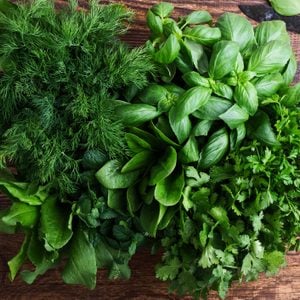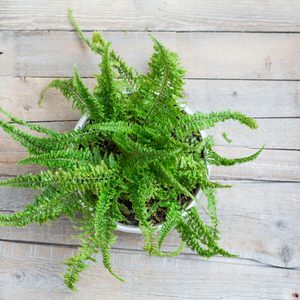12 Plant Watering Tips: How Often and How Much to Water Houseplants
Updated: Mar. 11, 2024
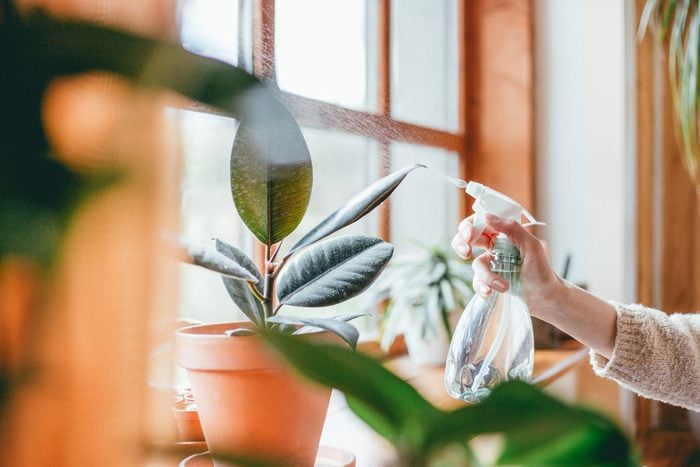
Be flexible, and let the soil guide when your plants need a drink
Do you struggle to keep even low-maintenance indoor plants like pothos or philodendrons alive? There’s a good chance this relates to your plant watering ways. You might think that forgetting to irrigate is the prevailing problem, but regular overwatering is the most common cause of dead plants, as it quickly leads to root rot.
How can you be more mindful when watering plants? It’s all about practicing a little restraint, understanding the needs of the individual indoor plant species and reading the signs that your plant needs a soaking.
So whether you have a finicky low-light indoor plant, like the water-loving calathea, or a drought-tolerant succulent, learn how to water plants like a pro.
How often to water plants
It’s true that desert-growing succulent species with fleshy foliage won’t need watering nearly as often as light-loving, leafy fiddle leaf figs or humid rainforest natives, like ferns. “If a plant has many thin leaves, the transpiration rate will be high and will use up soil moisture quickly. These kinds of plants depend on more frequent watering,” says Darryl Cheng, author of The New Plant Parent and creator of House Plant Journal.
However, it’s not just species selection that influences how often you water the plants in your home. Light and humidity levels, pot and plant size, and the type of container and potting soil you use all play their part.
Feel the soil
Ditch the idea that you need to be plant watering on a strict schedule; it’s all about having a flexible approach. Plant doctor Christopher Satch, a professor at the New York Botanical Garden, suggests that feeling the soil with your fingers twice a week is the more reliable way to tell when to water your plant than a day on the calendar.
You can skip the water meters too. “Water meters are junk because they are really just voltage meters—the idea being that if the soil is wet, it can pick up on voltage,” Satch says. “But in many cases, they will read wet when it’s dry, and dry when it’s wet.” Instead, stick your fingers in the soil, and water when it feels dry.
Signs a houseplant needs to be watered
So, how do you classify dryness? Cheng suggests there are three broad categories of watering needs:
- Water when the soil is completely dry: applies to succulents and cacti.
- Water when the soil is partially dry: most tropical foliage plants.
- Keep the soil evenly moist: delicate leaved plants like maidenhair fern.
“If you’re waiting for a sign from the plant, you’ll be too late,” he says. “The soil will reach the ‘water me now’ dryness point well before the plant wilts.” Thankfully, most plants can recover from some wilting, but don’t delay the dousing if the dry soil is combined with droopy, curling or brown-tipped leaves.
How to water plants
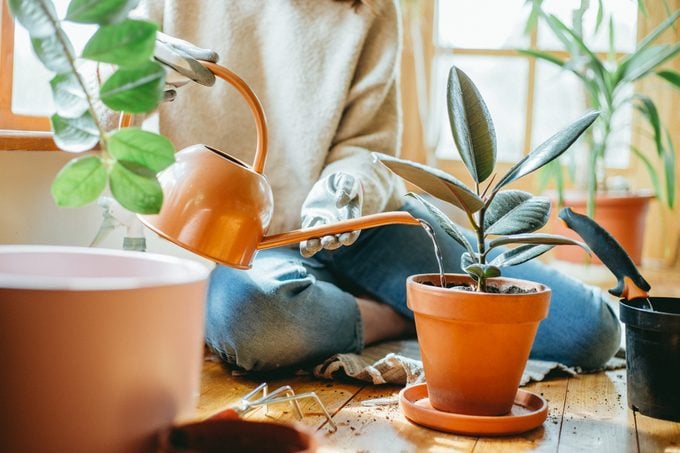
You might have heard that distilled water trumps the tap water from the faucet when plant watering. “Unless your tap water is excessively hard or deemed unfit for human consumption, it’s perfectly fine to use it,” says Satch. “Some sources claim that the chlorine in a lot of tap water is bad, but the amount is minuscule and dissipates without any action.” That means you don’t even need to leave your tap water out overnight before watering your plants.
However, Satch does recommend only using lukewarm water on your plants. “Cold water can slow down the growth of the plant, and too-cold water shocks the plant. Most houseplants are tropical, and the water isn’t cold when it rains,” he says. “Plus, lukewarm water also absorbs faster into the soil, which is what you want.”
Methods of watering plants
It’s rare for plants to thrive when sitting in water, so watering thoroughly less often is better than just dampening the soil multiple times a week. While the correct way to water your plants depends on the species and conditions, there are some general techniques to consider.
Water from the top
Top watering via a watering can is the most common houseplant watering method.
“When it rains, it pours, and the goal during any watering is to imitate nature and saturate the soil,” Satch explains. A common mistake plant owners make is stopping irrigation at the first signs of water coming out through the drainage holes. This likely means the water has bypassed the soil and hasn’t soaked into the center, where the roots are. That’s why he recommends watering houseplants in the sink. “Water in [stages]—water a bit, let it soak in, then water again. Repeat until the pot feels heavy, and the soil is saturated,” he says.
After, if there’s water sitting in the saucer under the pot, get rid of it. Your plant won’t enjoy having “wet feet.”
Avoid soaking the leaves when you’re watering from the top. The excess moisture can lead to fungal or bacterial diseases.
Water from the bottom
Species like African violets and snake plants aren’t fans of water collecting in their crown, where the stem meets the roots at the top of the soil. Pothos plant care on the other hand is different. As they are sensitive to water splashing their foliage, they might do better if you water them from the bottom.
Set the pot in a tray of water and, after around 10 minutes, once the soil feels damp, tip away any excess.
Misting
You’ll often see recommendations to mist moisture-loving plants. However, Satch explains that misting is only important to epiphytes—plants that grow on trees or rocks in their native environment, rather than in the soil. “Orchids, bromeliads, air plants and some ferns fall into this category. You do not, and should not, mist any other plant, as they have no mechanism for absorbing water through their leaves,” he says. “In fact, misting non-epiphytes like monstera and fiddle leaf figs will cause browning of the leaves from fungal infections. If you don’t mist, your leaves won’t get infected.” If you’re curious, here is the right care for monstera plants.
The ice cube method
Satch recommends steering clear of the much-touted houseplant hack of watering plants with ice cubes. The freezing water could shock the plant and won’t offer the deep watering many species appreciate. “I recommend lukewarm water, and orchids are no exception,” he says.
Looking for an all-around solution to providing the right care for your plants? Download one of these best plant care apps to have all the necessary plant-related information in one place.
Signs of overwatered plants
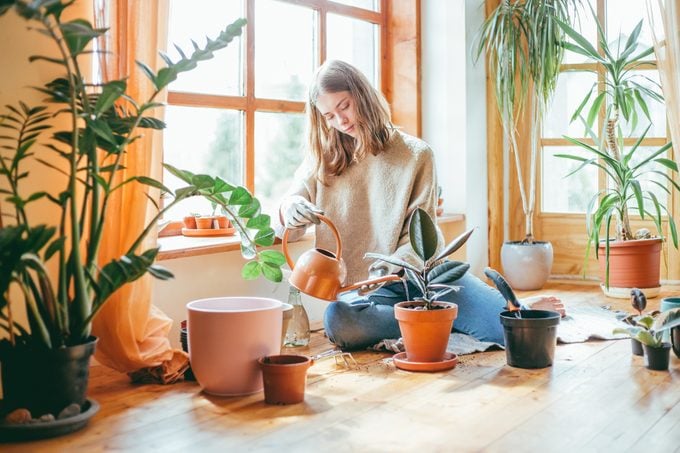
Some signs that you’re overwatering your plants include yellowing, droopy foliage, dropping new and old leaves, and a mushy base with a mold buildup.
“If a plant is overwatered, the soil may stay quite moist for longer than usual if the roots are in distress and potentially rotting,” says Cheng. He recommends trying to revive a dying plant with root rot by repotting it in fresh soil. In case you were wondering, here’s how to repot a plant.
Tips on plant watering
Keep in mind these extra handy hints to avoid flooding your flora:
- Get it right with light. “Without adequate light, a plant will be starving, and no amount of skill in watering will save it,” cautions Cheng.
- Pare back watering frequency during winter, when plants are slow growing or dormant.
- Pick the right pot. Porous materials, like terracotta and ceramics, absorb moisture and dry out the soil faster. That’s fine for succulents, but not so much for moisture-loving ferns or alocasias.
- Choose the right potting mix. You don’t want to use a moisture-retaining medium for cacti.
- Repot overly root-bound plants that aren’t absorbing water well, and don’t go too big with the new pot. A surplus of soil takes a long time to dry, often leading to root rot.
Sources:
- Darryl Cheng, author of The New Plant Parent and creator of House Plant Journal
- Christopher Satch, plant doctor and professor at the New York Botanical Garden

